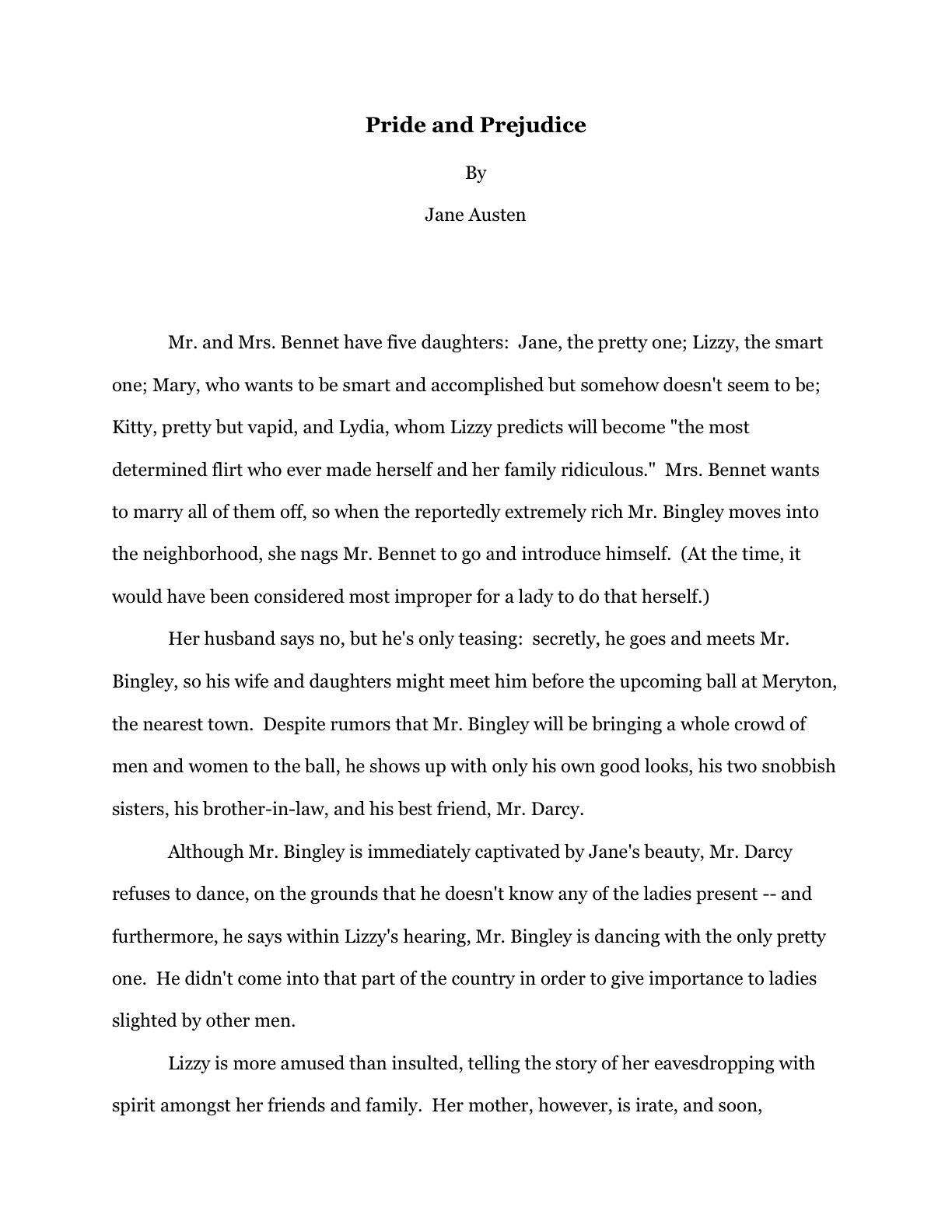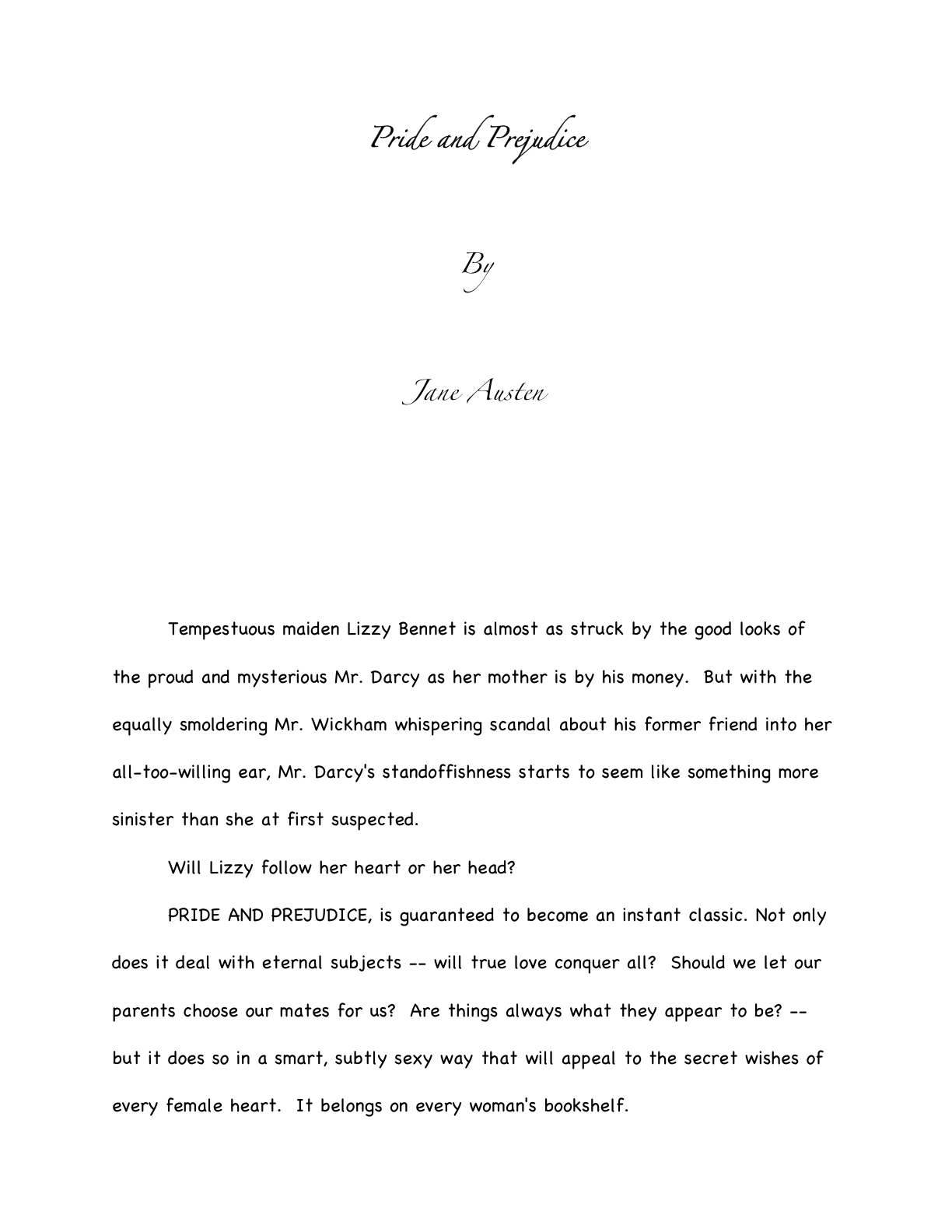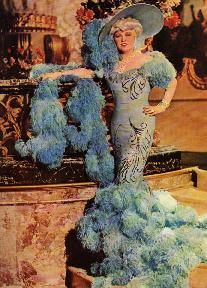Okay, so the joke in the title would have been funnier if I had in fact been posting on consecutive days, as I had originally planned. But as the illustrious comic Stephen Wright is fond of pointing out — you can’t have everything; where would you put it?
For the last couple of posts, I’ve been showing you examples of good and not-so-good 1-page synopses, so we could talk about (read: so I could conduct a monologue about) the overarching strategies that rendered them more or less effective. Since I haven’t exactly been overwhelmed with howls of protest on the subject — really? The prospect of constructing a 1-page synopsis for a 400-page novel of a complexity that would make Tolstoy weep annoys nobody? — I’m going to assume that we’re all pretty comfortable with the strategic part.
Before I move on to the ins and outs of writing the longer synopsis, I feel I should respond to some of the whimpers of confusion from the more structurally-minded of my readers. “But Anne,” I have heard some of you pointing out, “you’ve shown us a couple of visual examples of properly-formatted synopses — a sort of SYNOPSES ILLUSTRATED, if you will. Any chance that you might go over the various rather odd-looking formatting choices you’ve used in them before, say, we need to send out our own?”
Oh, certainly. Let’s take another example at the good 1-page synopsis for PRIDE AND PREJUDICE:
For veterans of any of my extended forays into the joys and terrors of standard format for manuscripts, nothing here should be too surprising. By and large, standard format for a synopsis is the same as for a page of manuscript: double-spaced, 1-inch margins all around, indented paragraphs, Times, Times New Roman, or Courier, the works. (If you’re unfamiliar with the rules of standard format, you will find them conveniently summarized in the HOW TO FORMAT A MANUSCRIPT and STANDARD FORMAT ILLUSTRATED categories on the list at right.
Please notice that, as with the first page of a manuscript, the author’s contact information does not appear on the first page of the synopsis. Unlike the first page of a manuscript, however, the title of the book should appear on the first page of a synopsis, along with the information that it IS a synopsis.
Why the latter? Because the synopsis and the manuscript it accompanies — to say nothing of the synopsis and query that often arrive in the same envelope — often become separated during the reading and evaluation process. It never pays to assume, then, that the reader of one will automatically know things about the other.
The title, for instance.
A second (or third, or fifth; extrapolate) page should also look very similar to any other page of standard-formatted manuscript, with one vital exception: the slug line for a synopsis should, as I mentioned in the previous sentence, SAY that the page it decorates is from a synopsis, not a manuscript, in addition to displaying the author’s last name, the title of the book, and the page number. (If you don’t know what a slug line is, why anyone would use it, or, indeed, why anyone would name something on a pretty page of text after a slimy creature, please see the SLUG LINE category on the list at right.)
Why include a slug line here? Because pages do occasionally go astray, and because synopses, like manuscripts, should never be bound in any way — unless a contest’s rules specifically state otherwise, of course.
Do I hear some nervous shifting in chairs out there? “But Anne,” I hear some of you cry out, “aren’t you ignoring the elephant in the room — or, in this case, on the page? You seem to have given some of the character names in all capital letters. Why?”
I’m glad you asked. It’s not absolutely necessary, technically speaking, but most professional fiction synopses CAPITALIZE THE ENTIRE NAME of each major character the first time it appears. Not every time, mind you; just the first.
Why only the first? To alert a skimming agent or editor to the fact that — wait for it — a new character has just walked into the story.
Because Millicent might, you know, miss ’em otherwise.
It is also considered pretty darned nifty (and word-count thrifty) to include the character’s age in parentheses immediately after the first time the name appears, resulting in synopses that look something like this:
ST. THERESA OF AVILA (26) has a problem. Ever since she started dating multi-millionaire GEORGE ARMSTRONG CUSTER (82), all of her friends have unaccountably decided that she is mercenary and hates Native Americans. Apart from JEANNE D’ARC (30), her wacky landlady-cum-bowling-partner, who uses every opportunity to pump Theresa for man-landing tips, none of the residents of Theresa’s swanky Upper East Side co-op are even speaking to her — at least until they start desperately vying for invitations to her exclusive wedding extravaganza, a lavish event to be held onstage at the Oscars, with THE REVEREND DOCTOR OWEN WILSON (44 if he’s a day, I would guess; Author! Author! hopes he feels better soon) officiating. How will Theresa find a maid of honor — and if she does, what will her jealous old boyfriend GOD (∞) do?
Should any of you out there think you’re up to rounding out the plot above into some measure of coherence and submitting it, please, be my guest. Really. I’d love to read it.
For the rest of you, please note what I have done here: in preparing a synopsis for a comedy, I have produced a — wait for it! — humorous treatment of the material.
And if I were creating a synopsis for a steamy romance novel with the same premise (although I tremble to think what a sex romp with that particular cast of characters would entail), you can bet your last wooden nickel [that] I would take some writerly steps to make my reader’s mouth go dry and his breath become short while perusing it.
Would I do this because I’m wacky? No, because — those of you who have been following this series, chant it with me now — the synopsis, like the first 50 pages, is a writing sample.
Oh, had I mentioned that before? Well, it cannot be said too often, in my opinion. The sensible writer’s primary goal in producing it is to demonstrate not only that it is a good (or at least marketable) story, an attention-grabbing yarn peopled with fascinating characters, but that the writer is a terrific storyteller.
Don’t worry — in the days to come, I shall be talking about ways in which you can tweak your synopsis in order to convey that lovely impression.
For the nonce, let’s take a quick field trip back to yesterday’s examples of a not-so-hot 1-page synopsis. Do you notice any formatting problems here?
If you immediately leapt to your feet, screaming, “It doesn’t have a slug line! It doesn’t have a slug line!” give yourself a gold star for the day. Further points if you bellowed that it doesn’t say anywhere on the page that it is a synopsis.
Extra credit if you noticed that the pages are not numbered — a major no-no in any submission, ever, yet one of the more common ones. And yes, you should number it, even for a one-page synopsis — and no, you should not number it consecutively with the manuscript, unless a contest rule’s SPECIFICALLY tell you to do so. The first page of a synopsis is always page 1.
Top yourself with a halo if you also discovered that Aunt Jane made the rookie mistake of adding her name to the synopsis anywhere but in the slug line. For book-length works, the first page of text — regardless of whether it is in the manuscript, the synopsis, or any other requested materials — is not a title page.
Don’t treat it as if it were one; it looks unprofessional to the pros.
Everyone happy with his or her score on that quiz? Let’s take on the other negative example:
Where do we even begin? Millicent the screener would almost certainly not even read this one — in fact, she might burst into laughter from several paces away.
Let’s go over why. It stars too far down on the page, for one thing, falling into the same title-page error as the previous example. It’s the over-the-top typeface, though, and the fact that the page uses more than one of them, that would set Millicent giggling and showing it to her coworkers.
Oh, and it doesn’t contain a slug line or numbering. But I doubt Millicent would even notice that over her guffaws.
It makes one other error for a fiction synopsis, a subtler one — any guesses what?
This one may surprise some of you: it mentions the title of the book IN the text of the synopsis. Why is this a problem? Well, it’s considered stylistically weak, a sign that the synopsis is talking ABOUT the book instead of getting the reader involved in the story. Or, to put it another way, and a bit more bluntly: a fiction synopsis is supposed to tell the story of the book; one that pulls the reader out of the story by talking about it at a distance tends not to do that well.
And anyway, the title is already both at the top of the page (and SHOULD be in the slug line): why, Millicent wonders impatiently, cradling her too-hot latte until it cools — she’s learning, she’s learning — would the writer WANT to waste the space and her time by repeating the information?
“Wait just a minute, Anne,” I hear some of my former questioners call from the rear of the auditorium. “You’re talking about the cosmetic aspects of the synopsis as though it were going to be judged as pitilessly as the manuscript I submit. Surely, that’s not the case? The synopsis is just a technical requirement, right?”
Um, no — as I said, it’s considered a WRITING SAMPLE. So yes, it does tend to be judged — and dismissed — just as readily as problematic text anywhere else in the submission packet.
Sorry to be the one to break that to you. But isn’t it better that you hear it from me than surmise it from a form-letter rejection? Or, as is more often the case, NOT surmise if from a form-letter rejection and keep submitting problematic synopses?
Something worth mulling over, I think.
Next time, we’ll leave technicalities behind and delve into the wonderful world of storytelling on the fly. Keep up the good work!
































